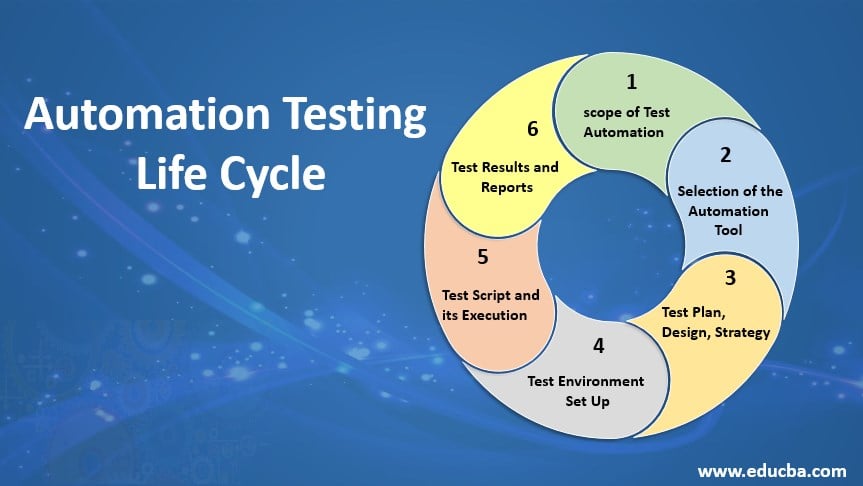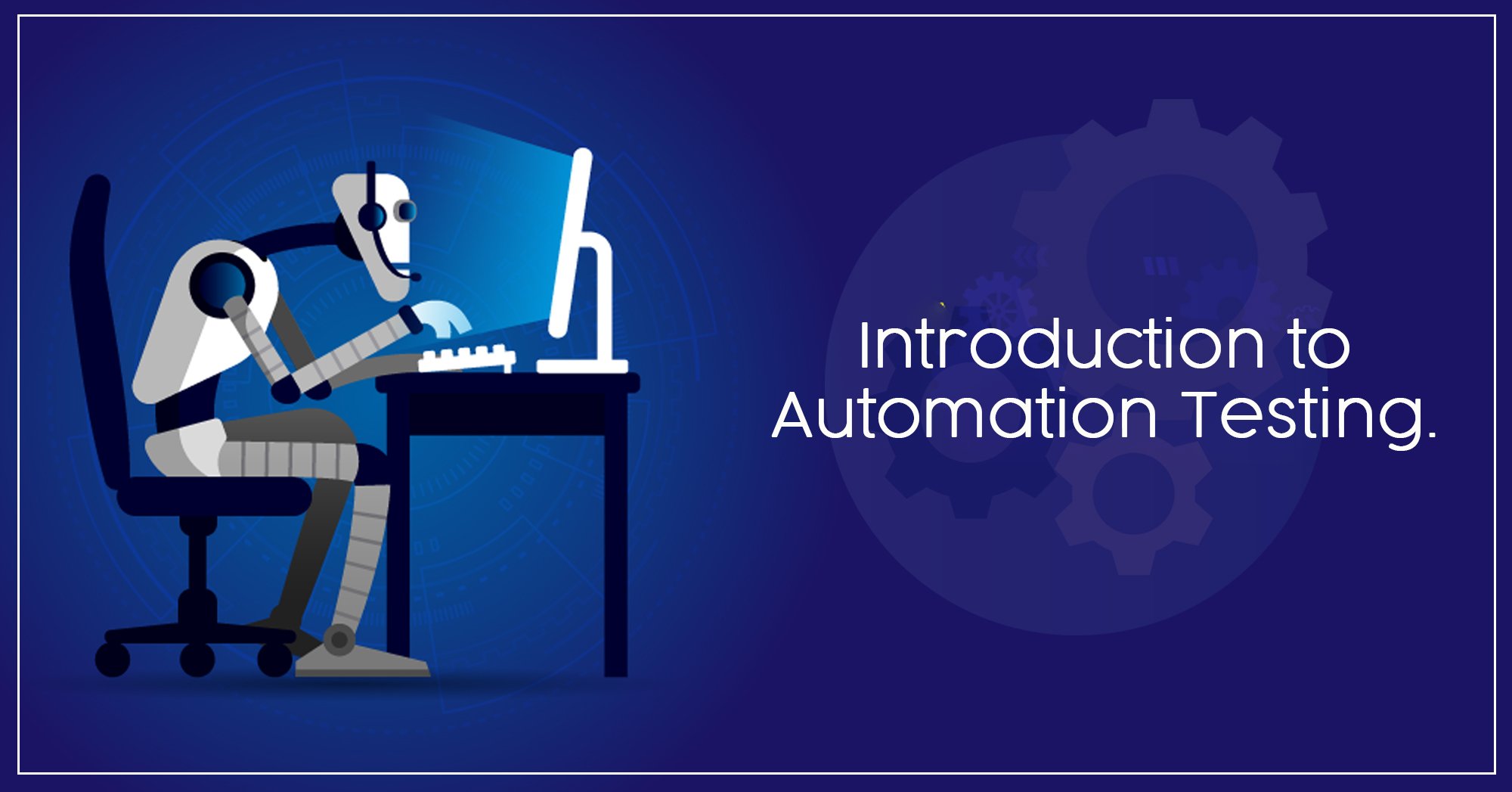Automation Testing Structures: Simplifying Intricate Testing Scenarios
From Manual to Automated Testing: A Comprehensive Guide to Transitioning Smoothly and Effectively
In the realm of software testing, the change from guidebook to automated procedures has actually come to be a significantly essential change for companies looking for to improve effectiveness and accuracy in their testing techniques. As modern technology remains to advancement, the need for seamless and reliable automatic testing approaches has actually never been more important. The journey from manual to automated screening is not without its difficulties, but when come close to purposefully and with a clear strategy in mind, the benefits can be substantial - automation testing. In this thorough guide, we will explore essential actions and factors to consider crucial for an effective transition, from the first choice of devices to the assimilation of automation into existing workflows. Keep tuned to uncover the understandings that will aid lead the way for a smoother and extra efficient screening process.
Advantages of Automated Evaluating
Automated screening offers countless benefits, enhancing efficiency and accuracy in software application growth procedures. Automated examinations can be run simultaneously on multiple devices and operating systems, dramatically speeding up the screening stage contrasted to hand-operated screening.
In addition, automated testing makes certain a greater degree of precision in identifying issues. Since automated examinations adhere to predefined manuscripts, human mistake is lessened, bring about even more reliable test outcomes. Uniformity in testing is likewise boosted, as automated tests execute the very same actions precisely each time they are run. This uniformity is critical in making certain that all capabilities of the software program are completely evaluated, decreasing the likelihood of undetected pests sliding through to production.
Selecting the Right Devices

To start with, examine your goals and demands. Understand the scope of your task, the modern technologies entailed, and the ability set of your team. This evaluation will certainly assist you figure out the capacities and features you call for in your screening devices.
Secondly, consider the compatibility of the tools with your existing procedures and systems. Seamless integration with your current software program growth lifecycle is crucial to make certain a smooth shift to automation.
In addition, examine the scalability and versatility of the tools. As your screening needs develop, the devices must be able to adjust and fit changes properly.
Finally, consider the assistance and neighborhood around the devices. When implementing automated screening, durable support and an energetic user neighborhood can provide useful resources and help. By carefully taking into consideration these aspects, you can choose the right devices that align with your demands and established the stage for an effective transition to automated testing.
Creating Effective Examination Manuscripts

When crafting test manuscripts, it is vital to consider the particular needs of the software being checked and ensure that the manuscripts address all essential performances. Clear and detailed calling conventions for examination scripts and examination instances can enhance readability and maintainability. In addition, including error handling systems within the examination scripts can assist in recognizing and dealing with concerns promptly.
Moreover, arranging test manuscripts into modular elements can boost reusability and scalability, decreasing redundancy and improving performance in test script maintenance. Normal testimonials and updates to evaluate scripts are critical to keep pace with evolving software application demands and capabilities. By following these principles, testers can create robust and efficient examination manuscripts that add significantly to the success of automated testing procedures.
Integrating Automation Into Workflows
By flawlessly you could try these out integrating automated screening tools like Selenium or Appium right into the software application growth lifecycle, teams can attain faster comments on code adjustments, leading to quicker insect detection and resolution. This assimilation enables for continual testing throughout the growth process, making certain that any concerns are identified early on, resulting in greater software program high quality. Correct integration of automation devices needs collaboration between advancement, screening, and operations teams to develop a unified operations that optimizes effectiveness and performance in delivering top notch software products.
Making Sure a Smooth Shift
Efficiently transitioning to automated testing includes careful preparation and careful execution to lessen disturbances and optimize performance in the software program growth procedure - automation testing. To make certain a smooth transition, it is important to start by carrying out a thorough assessment of the current testing processes and determining areas where automation can bring the most considerable benefits. Engaging with all stakeholders beforehand while doing so, including developers, testers, and project managers, is crucial for garnering assistance and buy-in for the automation campaign
Interaction is vital throughout this change stage. Clear interaction of the objectives, benefits, and assumptions of automated screening aids to take care of any kind of resistance or problems that might occur. Furthermore, providing appropriate training and sources for group members to upskill in automation tools and strategies is vital for making certain a successful transition.
Verdict
In verdict, transitioning from manual to automated testing provides various benefits, including boosted effectiveness and integrity. By picking the ideal devices, creating reliable examination scripts, and incorporating automation flawlessly read review right into operations, companies can make sure a effective and smooth shift. It is necessary to accept automation as a useful possession in software application testing processes to improve total top quality and productivity.
In the realm of software screening, the change from handbook to automated processes has come to be a significantly crucial shift for organizations looking for to improve effectiveness and accuracy in their screening methods. Automated tests can be run concurrently on several devices and running systems, dramatically my latest blog post speeding up the testing phase contrasted to hands-on testing. Uniformity in testing is additionally enhanced, as automated tests implement the exact same steps specifically each time they are run.To ensure the effective application of selected screening tools, the production of efficient test manuscripts plays a crucial duty in verifying the functionality and performance of automated processes - automation testing. By complying with these principles, testers can develop robust and efficient examination manuscripts that contribute dramatically to the success of automated testing procedures